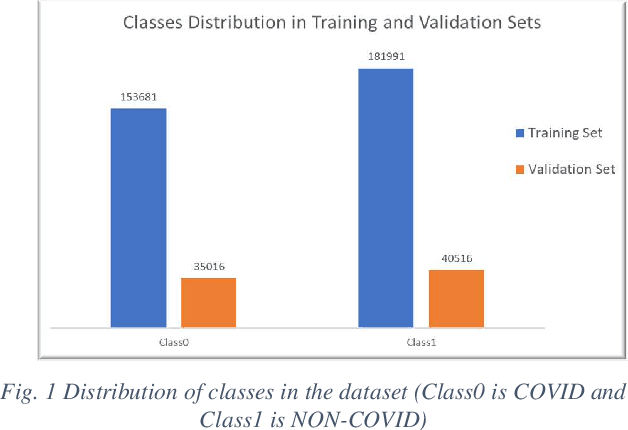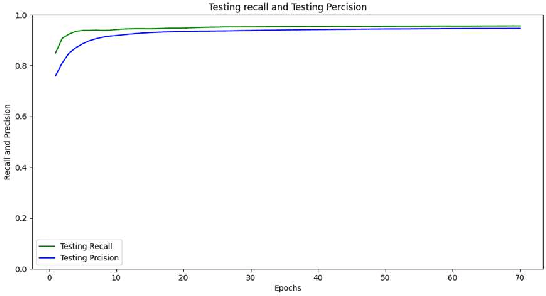Kenan Morani
COVID-19 Detection Using Slices Processing Techniques and a Modified Xception Classifier from Computed Tomography Images
Dec 10, 2023Abstract:This paper extends our previous method for COVID-19 diagnosis, proposing an enhanced solution for detecting COVID-19 from computed tomography (CT) images. To decrease model misclassifications, two key steps of image processing were employed. Firstly, the uppermost and lowermost slices were removed, preserving sixty percent of each patient's slices. Secondly, all slices underwent manual cropping to emphasize the lung areas. Subsequently, resized CT scans (224 by 224) were input into an Xception transfer learning model. Leveraging Xception's architecture and pre-trained weights, the modified model achieved binary classification. Promising results on the COV19-CT database showcased higher validation accuracy and macro F1 score at both the slice and patient levels compared to our previous solution and alternatives on the same dataset.
COVID-19 Detection Using Swin Transformer Approach from Computed Tomography Images
Oct 12, 2023Abstract:The accurate and efficient diagnosis of COVID-19 is of paramount importance, particularly in the context of large-scale medical imaging datasets. In this preprint paper, we propose a novel approach for COVID-19 diagnosis using CT images that leverages the power of Swin Transformer models, state-of-the-art solutions in computer vision tasks. Our method includes a systematic approach for patient-level predictions, where individual CT slices are classified as COVID-19 or non-COVID, and the patient's overall diagnosis is determined through majority voting. The application of the Swin Transformer in this context results in patient-level predictions that demonstrate exceptional diagnostic accuracy. In terms of evaluation metrics, our approach consistently outperforms the baseline, as well as numerous competing methods, showcasing its effectiveness in COVID-19 diagnosis. The macro F1 score achieved by our model exceeds the baseline and offers a robust solution for accurate diagnosis.
COVID-19 Detection Using Segmentation, Region Extraction and Classification Pipeline
Oct 06, 2022



Abstract:Purpose The main purpose in this study is to propose a pipeline for COVID-19 detection from a big and challenging database of Computed Tomography (CT) images. The proposed pipeline includes a segmentation part, a region of interest extraction part, and a classifier part. Methods The methodology used in the segmentation part is traditional segmentation methods as well as UNet based segmentation. In the classification part a Convolutional Neural Network (CNN) was used to take the final diagnosis decisions. Results In the segmentation part, the proposed segmentation methods show high dice scores on a publicly vailable dataset. In the classification part, the results show high accuracy on the validation partition of COV19-CT-DB dataset as well as higher precision, recall, and macro F1 score. The classification results were compared to our previous works other studies as well as on the same dataset. Conclusions The improved work in this paper proposes efficient pipeline with a potential of having clinical usage for COVID-19 detection and diagnosis via CT images. The code is on github at https://github.com/IDU-CVLab/COV19D_3rd
COVID-19 Detection Using Transfer Learning Approach from Computed Tomography Images
Jul 08, 2022



Abstract:Our main goal in this study is to propose a transfer learning based method for COVID-19 detection from Computed Tomography (CT) images. The transfer learning model used for the task is a pretrained Xception model. Both model architecture and pre-trained weights on ImageNet were used. The resulting modified model was trained with 128 batch size and 224x224, 3 channeled input images, converted from original 512x512, grayscale images. The dataset used is a the COV19-CT-DB. Labels in the dataset include COVID-19 cases and Non-COVID-19 cases for COVID-1919 detection. Firstly, a accuracy and loss on the validation partition of the dataset as well as precision recall and macro F1 score were used to measure the performance of the proposed method. The resulting Macro F1 score on the validation set exceeded the baseline model.
Deep Learning Based Automated COVID-19 Classification from Computed Tomography Images
Nov 22, 2021



Abstract:The paper presents a Convolutional Neural Networks (CNN) model for image classification, aiming at increasing predictive performance for COVID-19 diagnosis while avoiding deeper and thus more complex alternatives. The proposed model includes four similar convolutional layers followed by a flattening and two dense layers. This work proposes a less complex solution based on simply classifying 2D CT-Scan slices of images using their pixels via a 2D CNN model. Despite the simplicity in architecture, the proposed model showed improved quantitative results exceeding state-of-the-art on the same dataset of images, in terms of the macro f1 score. In this case study, extracting features from images, segmenting parts of the images, or other more complex techniques, ultimately aiming at images classification, do not yield better results. With that, this paper introduces a simple yet powerful deep learning based solution for automated COVID-19 classification.
 Add to Chrome
Add to Chrome Add to Firefox
Add to Firefox Add to Edge
Add to Edge